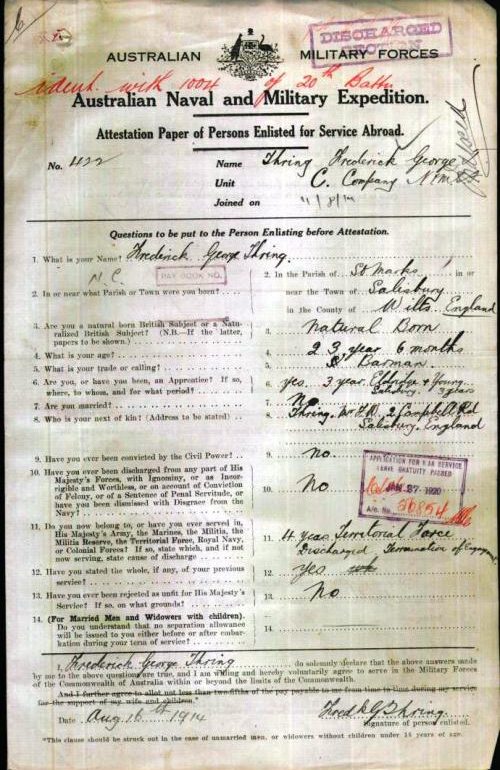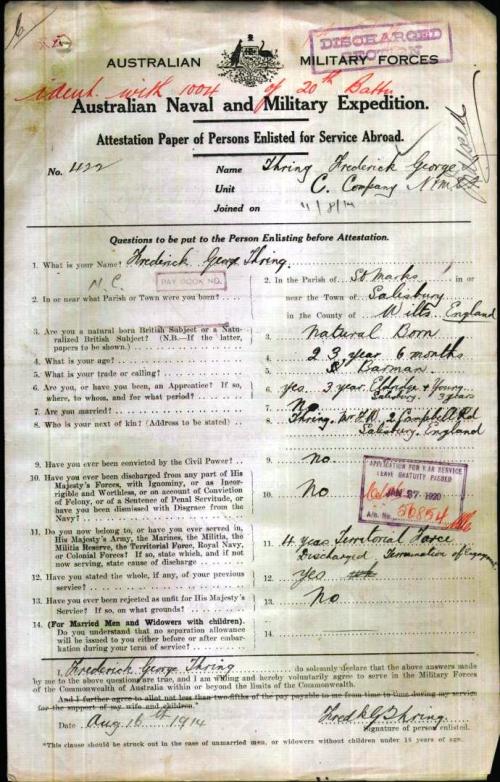
http://trove.nla.gov.au/ndp/del/article/10791169 Melbourne Argus 20 June 1913
Frederick George Thring had felt constricted in England. He longed for a climate where a man could work outdoors without getting frozen or soaked half the year. And, even if there was no gold left in them thar hills, he might at least make a decent living for himself and the family he hoped to have one day.
When his parents decided to move from Wiltshire to take on the Post Office in St Mary Bourne, it provided the nudge he needed to make his own way in the world. *
In 1913 Frederick got an assisted passage on the SS Makarini en route for Australia and arrived in Melbourne on 19 June 1913. The following day he set foot on Antipodean soil, full of hope for the future (along with his 829 companions on a similar adventure).
We do not know how he fared over the next year but, as we do know, what happened then was Britain’s declaration of war which involved, willy nilly, Australia and New Zealand. On 6 August the British government ‘invited’ the Australians to join them and, good for Frederick, only five days later he enlisted.
The Australian Naval and Military Expeditionary Force(AN&MEF) was a small volunteer force of approximately 2,000 men, raised in Australia shortly after the outbreak of the First World War to seize and destroy German wireless stations in German New Guinea in the south-west Pacific. Britain required the German wireless installations to be destroyed because they were used by Vice-Admiral Maximilian von Spee‘s German East Asian Cruiser Squadron, which threatened merchant shipping in the region…The AN&MEF began forming following a request by the British government on 6 August 1914. The force was assembled under the guidance of Colonel James Legge, and was separate from the Australian Imperial Force forming under Major-General William Bridges. The AN&MEF comprised one battalion of infantry of 1,000 men enlisted in Sydney—known as the 1st Battalion, AN&MEF—plus 500 naval reservists and ex-sailors who would serve as infantry.
It seems from his army papers that, while he was duly attested on 11 August, he was only finally ’embodied’ on 29 March 1915, with the rank of Sergeant and the regimental number of 1004 into the 20th Battalion.
We shall hear more of Sergeant Thring in the next few months.
A NOTE ON SOURCES
*We know from other sources that the Thrings took on the post office, but (presumably because of the war) there seem to have been no editions of the Post Office Directory between 1912 and 1920. We cannot therefore as yet pinpoint the exact year they came, so do not know whether Frederick George was here before his departure for Australia.
We do know that he travelled on the SS Makarini, but do not know whether his passage was ‘assisted’ or not. It seems likely that it was, hence I have written it that way.



